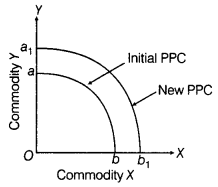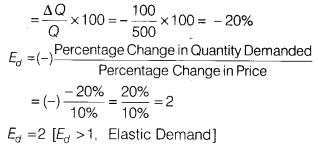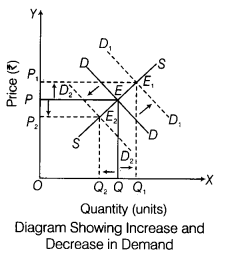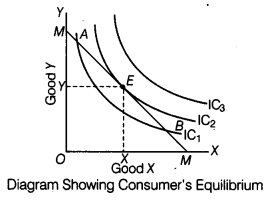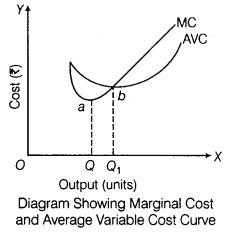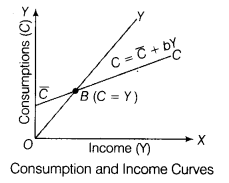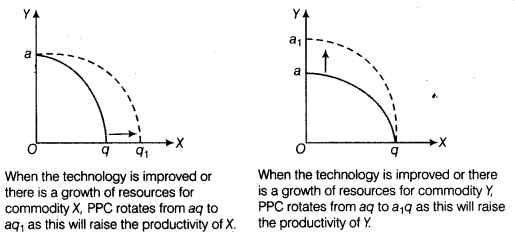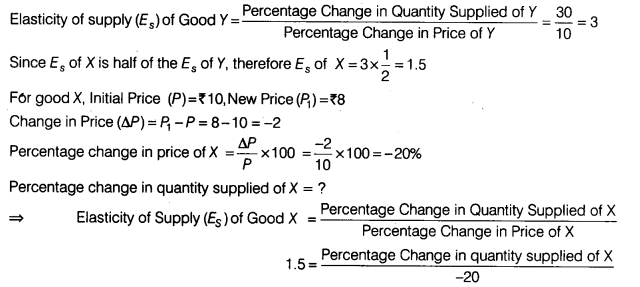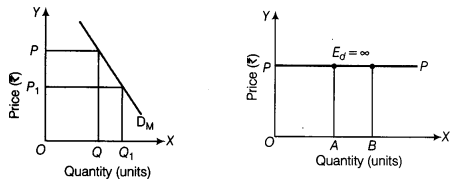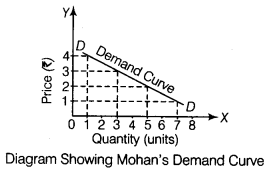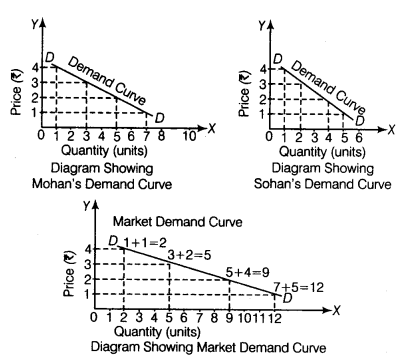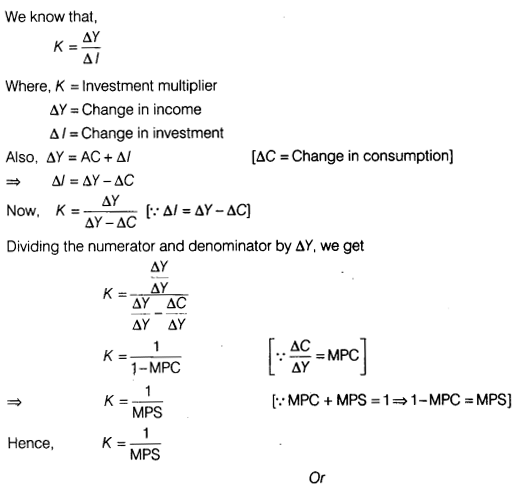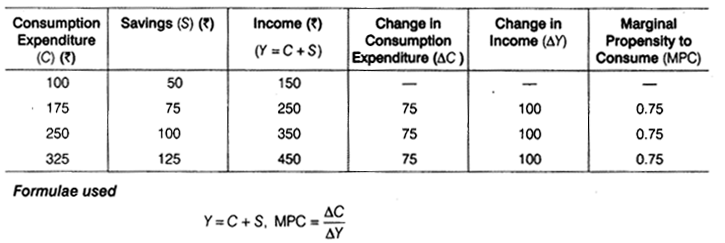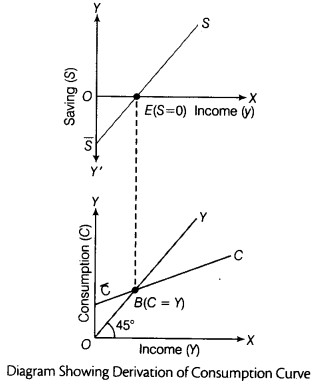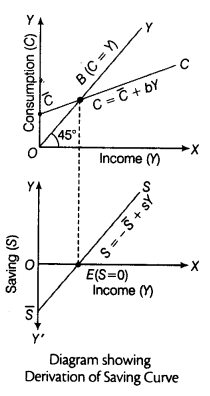CBSE Sample Papers for Class 10 Social Science Paper 2 are part of CBSE Sample Papers for Class 10 Social Science. Here we have given CBSE Sample Papers for Class 10 Social Science Paper 2.
CBSE Sample Papers for Class 10 Social Science Paper 2
| Board | CBSE |
| Class | X |
| Subject | Social Science |
| Sample Paper Set | Paper 2 |
| Category | CBSE Sample Papers |
Students who are going to appear for CBSE Class 10 Examinations are advised to practice the CBSE sample papers given here which is designed as per the latest Syllabus and marking scheme as prescribed by the CBSE is given here. Paper 2 of Solved CBSE Sample Paper for Class 10 Social Science is given below with free PDF download solutions.
General Instructions:
- The question paper has 27 questions in all. All questions are compulsory.
- Marks are indicated against each question.
- Questions from serial number 1 to 7 are very short answer questions. Each question carries 1 mark.
- Questions from serial number 8 to 18 are 3 marks questions. Answer of these questions should not exceed 80 words each.
- Questions from serial number 19 to 25 are 5 marks questions. Answer of these questions should not exceed 100 words each.
- Question number 26 and 27 are map questions of 2 marks from History and 3 marks from Geography. After completion, attach the maps inside the answer book
Question 1.
What was ‘cowries’?
OR
Who produced a music book that had a picture on the cover page announcing the ‘Dawn of the Century’?
OR
Who wrote several volumes on the London labour, and compiled long lists of those who made a living from crime?
Question 2.
Name the oldest Japanese book printed.
OR
What was the price of Henry Fielding’s Tom Jones (1749) issued in six volumes?
Question 3.
What do you understand by The Black Power?
Question 4.
Give a prominent example of a region with a low rainfall and which is drought prone.
Question 5.
What does development mean for a landless rural labourer?
Question 6.
What is a cheque?
Question 7.
What does Life Expectancy at birth denote?
Question 8.
Gandhiji decided to launch a nationwide satyagraha in 1919. Why?
Question 9.
Critically evaluate the conditions that favoured the conquests of Latin America by the European
powers like Spain and Portugal.
OR
What is proto-industrialisation? “In the seventeenth and eighteenth centuries, merchants from the towns in Europe began moving to the countryside”. Explain any two reasons.
OR
Who wrote ‘The Bitter Cry of Outcast London’? When? What was the issue author stated?
Question 10.
What is holding together Federation? Give examples of ‘holding together federations’.
Question 11.
What are Concurrent Lists? Give Examples.
Question 12.
Point out why the Mexico Olympics of 1968 was depicted as a landmark in the history of the
Civil Rights Movements in the United States of America.
Question 13.
Define the term resource. Do you think resources are free gift of nature?
Question 14.
Name the two important by-products of sugarcane other than the sugar and jaggery. State
the temperature and rainfall requirements of sugarcane. Also name the two major sugarcane producing states of India.
Question 15.
What is ‘Average Income’ Or ‘Per capita Income’?
Question 16.
Analyse the functions of Consumer Protection Councils?
Question 17.
Explain what is tertiary sector? Give examples.
Question 18.
Who supervises the functioning of banks? In what ways is the supervision done?
Question 19.
Write short notes on Gutenberg and the Printing Press.
OR
‘The most of readers of the novel lived in the city, the novel created in them a feeling of connection with the fate of rural communities’. Explain with suitable examples
Question 20.
From which language the term ‘liberalism’ derived? Give its meaning. What was liberalism
according to Middle Class?
OR
Why the French thought colonies necessary? What did they do for that? Explain any two points.
Question 21.
‘Democracy is an accountable, responsive and legitimate form of government’. Explain
Question 22.
Discuss Challenge of Expansion and Challenge of Deepening of Democracy with suitable
examples.
Question 23.
What is the total length of road networks in India? Explain how roads have edge over the
railways.
Question 24.
Name the most important metallurgical industry in India. Where is this industry concentrated?
Explain any two factors responsible for the concentration of this industry.
Question 25.
Explain any two rights of consumers that protect them from exploitation in the market place.
Question 26.
Two features A and B are marked on the given political outline map of India: Identify these features with the help of the following information and write their correct names on the lines marked in the map:
A. The place where the Indian National Congress Session was held in September 1922.
B. The place where Gandhiji broke the ‘Salt Law’.
OR
Locate and label on the same map given:
(1) The place where peasants organized a Satyagraha in 1917
(2) Nagpur
Question 27.
On the given same political outline map of India locate and label/identify the type of soil the following with appropriate symbols:
(1) Identity the type of soil in the shaded portion shown in map.
(2) Mysore Silk Textile Centre
(3)Vishakhapatnam Sea Port
Answers
Answer 1.
Cowries-the Hindi cowdi or seashells, used as a form of currency.
OR
In 1900, a popular music publisher E.T. Pauli.
OR
Henry Mayhew.
Answer 2.
The oldest Japanese book, printed in AD 868, is the Buddhist Diamond Sutra.
OR
Henry Fielding’s Tom Jones (1749) was issued in six volumes priced at three shillings each.
Answer 3.
A movement emerged in 1966 and lasted till 1975, which was a more militant anti-racist
movement, advocating even violence if necessary to end racism in the US.
Answer 4.
Rajasthan
Answer 5.
Ans. More days of work and better wages; local school is able to provide quality education for
children; there is health facilities, and there is no social discrimination.
Answer 6.
A cheque is a paper instructing the bank to pay a specific amount from the person’s account
to the person in whose name the cheque has been issued.
Answer 7.
Life Expectancy at birth denotes, as the name suggests, average expected length of life of a
person at the time of birth.
Answer 8.
(1) Gandhij i in 1919 decided to launch a nationwide satyagraha against the proposed Rowlatt Act (1919).
(2) This Act had been hurriedly passed through the Imperial Legislative Council despite the united opposition of the Indian members. It gave the government enormous powers to repress political activities, and allowed detention of political prisoners without trial for two years.
(3) Mahatma Gandhi wanted non-violent civil disobedience against such unjust laws, which would start with a hartal on 6 April.
Answer 9.
(1) The conquest by European powers like Spain and Portugal were not just a result of superior
firepower or conventional military weapons.
(2) It was the germs such as those of smallpox that they carried on their person. Because of their long isolation, America’s original inhabitants had no immunity against these diseases
that came from Europe. Smallpox in particular proved a deadly killer.
(3) Once introduced, it spread deep into the continent, ahead even of any Europeans reaching there. It killed and decimated whole communities, paving the way for conquest.
OR
Even before factories began to dot the landscape in England and Europe, there was large- scale industrial production for an international market. This was not based on factories. Many historians now refer to this phase of industrialisation as proto-industrialisation.
Two Reasons:
- In the seventeenth and eighteenth centuries, merchants from the towns in Europe began moving to the countryside, supplying money to peasants and artisans, persuading them to produce for an international market.
- With the expansion of world trade and the acquisition of colonies in different parts of the world, the demand for goods began growing.
OR
1. Andrew Meams, a clergyman who wrote The Bitter Cry of Outcast London in the 1880s.
2. It showed why crime was more profitable than labouring in small underpaid factories: ‘A child seven years old is easily known to make 10 shillings 6 pence a week from thieving … Before he can gain as much as the young thief (a boy) must make 56 gross of matchboxes a week, or 1,296 a day.
Answer 10.
Holding Together is where a large country decides to divide its power between the constituent
States and the national government. In this category, the central government tends to be more powerful vis-a-vis the States. Very often different constituent units of the federation have unequal powers. Some units are granted special powers.
India, Spain and Belgium are examples of this kind of ‘holding together’ federations.
Answer 11.
(1) Concurrent List includes subjects of common interest to both the Union Government as
well as the State Governments, such as education, forest, trade unions, marriage, adoption and succession.
(2) Both the Union as well as the State Governments can make laws on the subjects mentioned in this list. If their laws conflict with each other, the law made by the Union Government will prevail.
Answer 12.
(1) The US athletes, Tommie Smith and John Carlos were African-Americans. They had won the gold and bronze medals respectively.
(2) They received their medals wearing black socks and did not wear shoes, this was done to represent Black poverty. With this gesture, they tried to draw international attention to racial discrimination in the United States.
(3) The black-gloved and raised clenched fists were meant to symbolize black power. The silver medallist, white Australian athlete, Peter Norman, wore a human rights badge on his shirt during the ceremony to show his support to the two Americans
Answer 13.
(1) Everything available in our environment which can be used to satisfy our needs, provided,
it is technologically accessible, economically feasible and culturally acceptable can be termed as ‘Resource’.
(2) They are not. Resources are a function of human activities.
(3) Human beings themselves are essential components of resources.
(4) They transform material available in our environment into resources and use them.
Answer 14.
(1) Sugarcane by-products: Khandsari and molasses
(2) Rainfall: 75-100 cm annually
(3) Temperature: 21°C to 27°C
(4) States: Uttar Pradesh, Maharashtra, Tamil Nadu and Karnataka, Punjab and Haryana.
Answer 15.
Per capita Income is obtained by dividing the national income by the population of the country.
![]()
Answer 16.
(1) The consumer movement in India has led to the formation of various organisations locally known as consumer forums or consumer protection councils.
(2) They guide consumers on how to file cases in the consumer court. On many occasions,
they also represent individual consumers in the consumer courts.
(3) These voluntary organisations also receive financial support from the government for
creating awareness among the people.
Answer 17.
(1) These are activities that help in the development of the primary and secondary sectors.
These activities, by themselves, do not produce a good but they are an aid or a support
for the production process.
(2) For example, goods that are produced in the primary or secondary sector would need to be transported by trucks or trains and then sold in wholesale and retail shops. At times, it may be necessary to store these in godowns.
(3) We also may need to talk to others over telephone or send letters (communication) or
borrow money from banks (banking) to help production and trade. Transport, storage, communication, banking, trade are some examples of tertiary activities.
(4) Since these activities generate services rather than goods, the tertiary sector is also called the service sector.
Answer 18.
(1) The Reserve Bank of India supervises the functioning of formal sources of loans.
(2) The RBI monitors the banks whether they are maintaining minimum cash balance.
(3) The RBI sees that the banks give loans not just for profit-making businesses and traders
but also to small cultivators, small scale industries, to small borrowers etc.
(4) Periodically, banks have to submit information to the RBI on how much they are lending, to whom, at what interest rate, etc.
Answer 19.
(1) Gutenberg was the son of a merchant and grew up on a large agricultural estate.
(2) From his childhood he had seen wine and olive presses. He learnt the art of polishing i stones, became a master goldsmith, and also acquired the expertise to create lead moulds used for making trinkets. Drawing on this knowledge, Gutenberg adapted existing
technology to design his innovation. The olive press provided the model for the printing press, and moulds were used for casting the metal types for the letters of the alphabet.
(3) By 1448, Gutenberg perfected the system. The first book he printed was the Bible. About 180 copies were printed and it took three years to produce them. By the standards of the time this was fast production.
OR
(1) The nineteenth-century British novelist Thomas Hardy, for instance, wrote about traditional rural communities of England that were fast vanishing. It was written at a time when large farmers fenced off land, bought machines and employed labourers to produce for the market.
(2) Second was when the old rural culture with its independent farmers was dying out. We get a sense of this change in Hardy’s Mayor of Casterbridge (1886). It is about Michael Henchard, a successful grain merchant, who becomes the mayor of the farming town of Casterbridge.
Answer 20.
(1) The term ‘liberalism’ derives from the Fatin root liber, meaning free.
(2) For the new middle classes, liberalism stood for freedom for the individual and equality of all before the law.
(3) Politically, it emphasised the concept of government by consent. Since the French Revolution, liberalism had stood for the end of autocracy and clerical privileges, a constitution and representative government through parliament. Nineteenth-century liberals also stressed the inviolability of private property.
OR
(1) Colonies were considered essential to supply natural resources and other essential goods.
(2) Fike other Western nations, France also thought it was the mission of the ‘advanced’ European countries to bring the benefits of civilisation to backward peoples.
(3) The French began by building canals and draining lands in the Mekong delta to increase cultivation. The vast system of irrigation works – canals and earthworks – built mainly with forced labour, increased rice production and allowed the export of rice to the international market.
Answer 21.
(1) Most basic outcomes of democracy should be that it produces a government that is
accountable to the citizens, and responsive to the needs and expectations of the citizens.
(2) Democracy is based on the idea of deliberation and negotiation. So, some delay is bound to take place but because it has followed procedures, its decisions may be both more acceptable to the people and more effective. So, the cost of time that democracy pays is perhaps worth it.
(3) A citizen who wants to know if a decision was taken through the correct procedures can find this out. She has the right and the means to examine the process of decision-making. This is known as transparency.
(4) The democratic government develops mechanisms for citizens to hold the government accountable and mechanisms for citizens to take part in decision making whenever they think fit.
Answer 22.
Discuss Challenge of Expansion and Challenge of Deepening of Democracy with suitable
examples.
Ans.
(1) Challenge of ‘Expansion of Democracy’: This stage involves applying the basic principle of democratic government across all the regions, different social groups and various institutions. Empowering various social groups, federal structures, women and minorities etc. This also means that less and less decisions should remain outside the democratic control. Most of the democracies like India and USA face this challenge.
(2) Challenge of ‘Deepening of Democracy’: This involves strengthening of the institutions and practices of democracy by people’s participation and control. This should happen in such a way that people can realise their expectations of democracy. This requires an attempt to bring down the control and influence of the rich and powerful in making governmental decisions.
Answer 23.
(1) Length of road networks: 2.3 million km.
(2) Roadways: Edge over railways: (Any three)
- Construction cost of roads is much lower than that of railway lines.
- Roads can traverse comparatively more dissected and undulating topography.
- Roads can negotiate higher gradients of slopes and as such can traverse mountains such
as the Himalayas. - Road transport is economical in transportation of few persons and relatively smaller amount of goods over short distances.
- It also provides door-to-door service, thus the cost of loading and unloading is much lower.
- Road transport is also used as a feeder to other modes of transports such as they provide a link between railway stations, air and seaports.
Answer 24.
(1) Iron and Steel industry
(2) Chhotanagpur Plateau region
(3) Factors responsible:
(a) Low cost iron ore: Chhotanagpur Plateau region is extremely rich in good quality iron ore at low cost. This helped to locate many steel plants in this region.
(b) Home market: India is progressing rapidly. Hence, the country is in great need of steel leading to a great demand. Thus, there is a great potential for home market.
(c) Well developed transport network: This region is well developed has network of railways and that helps procuring raw materials and then distribute in the market.
Answer 25.
Rights of consumers:
- Right to information
- Right to seek redressal
- Right to choose
- Right to be heard
- Right to safety
Answer 26.

Answer 27.

We hope the CBSE Sample Papers for Class 10 Social Science Paper 2 help you. If you have any query regarding CBSE Sample Papers for Class 10 Social Science Paper 2, drop a comment below and we will get back to you at the earliest.









 (d)
(i) SELECT * FROM EMP WHERE AGE<25';
(ii) SELECT COUNT(*) FROM EMP WHERE NAME LIKE 'P%';
(d)
(i) SELECT * FROM EMP WHERE AGE<25';
(ii) SELECT COUNT(*) FROM EMP WHERE NAME LIKE 'P%';





